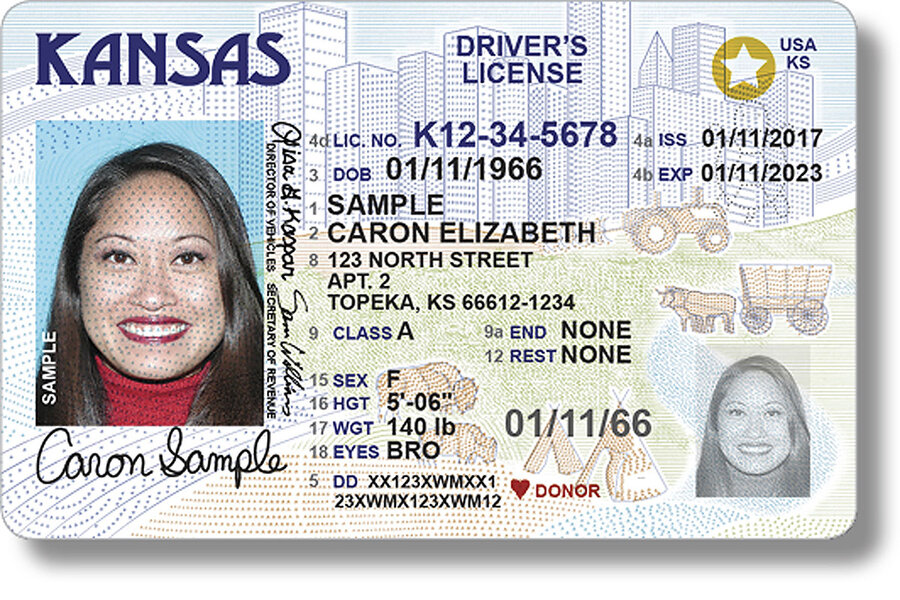Real ID: what Americans should expect
Loading...
If you do any airline travel at all, you’ll need to check your wallet soon – and not just for a credit card. Legislation that took effect in 2005, having been put in motion after 9/11, calls for the use of an identification card or a driver’s license that meets stepped-up federal standards. It will soon be needed to access federal facilities and to board federally regulated commercial aircraft. The exact timing depends on your state (see the chart below). Even in those states that have been granted extensions, Oct. 1, 2020, is the hard deadline. After that date, a Real ID will be required. The act does not apply to voting or registering to vote, attending court proceedings, accessing health services (at hospitals, for example), entering public areas, or even driving per se. Also, the law does not prohibit an agency from accepting other forms of identification such as a US passport. Read the full Briefing for more details.
Changes are coming to identification requirements for residents of the United States. In response to a 2005 federal law, states are ramping up security measures involved in issuing driver’s licenses and other identification cards.
Q: What are Real IDs?
A Real ID can be either an identification card or a driver’s license that meets stepped-up federal standards. It will be needed to access federal facilities, enter nuclear power plants, and board federally regulated commercial aircraft.
Q: Why was legislation passed?
Congress passed the Real ID Act in 2005 in response to 9/11: Some of the hijackers aboard the four flights that crashed that day used fraudulent IDs. The Real ID Act strives to make securing fake IDs more difficult.
“Securing our identity documents is a crucial component to keeping the commonwealth, and the country, safe,” said Pennsylvania state Rep. Ed Neilson, a Democrat, when the state passed the Pennsylvania Real ID Compliance Act in May 2017.
Q: What’s happening now?
The beginning of this year included several deadlines as the Real ID process moves along. Jan. 22 was a key date for domestic air travel: As of that day, any driver’s licenses used for identification at airports have to be issued by states that are either in compliance with Real ID requirements or have been granted an extension. Also, on Feb. 5, Real ID enforcement began for states or territories that are not compliant and do not have an extension.
American Samoa is the only US region that is not compliant and doesn’t have an extension (see map). Thirty states are compliant, and 20 have been granted extensions. The latter states are thus in the midst of taking steps to meet Real ID requirements. Massachusetts, for example, recently closed its Registry of Motor Vehicles offices for a weekend so it could upgrade its computer system as part of the Real ID rollout.
Q: When will Real ID be enforced?
It depends on the state. For those that have been granted extensions, Oct. 1, 2020, is the hard deadline. After that date, a Real ID will be required to fly, access restricted and semi-restricted federal facilities, and enter nuclear power plants.
Q: What do people need to apply for a Real ID card?
Applications for a Real ID can be made at a local department of motor vehicles. The required documentation depends on personal circumstances but is likely to include a Social Security card or tax form; a birth certificate, passport, or immigration form; and two proofs of state residency, such as a current utility bill.
Q: Will Real ID be required anytime people need proof of identity?
Not necessarily. The Real ID Act does not apply to voting or registering to vote, attending court proceedings, accessing health services (at hospitals, for example), entering public areas, or even driving per se. Also, the law does not prohibit an agency from accepting other forms of identification such as a US passport.
Q: How does this law apply to unauthorized immigrants?
The federal measures allow compliant states to issue driver’s licenses and identification cards to unauthorized immigrants. The cards are required to state on their face and in the machine-readable zone that they can’t be used for official federal purposes. Also, their design must differentiate them from cards that meet Real ID standards.
However, several states issue noncompliant cards for various reasons, so the Department of Homeland Security cautions against assuming that holders of such cards are unauthorized immigrants.
Q: How will this affect beneficiaries of the Deferred Action for Childhood Arrivals (DACA) program?
The law allows states to issue Real ID-compliant driver’s licenses and identification cards to those who provide valid evidence of having approved deferred-action status. They must also have employment authorization documents and Social Security numbers. These DACA individuals are allowed to hold temporary Real IDs until their expiration.









